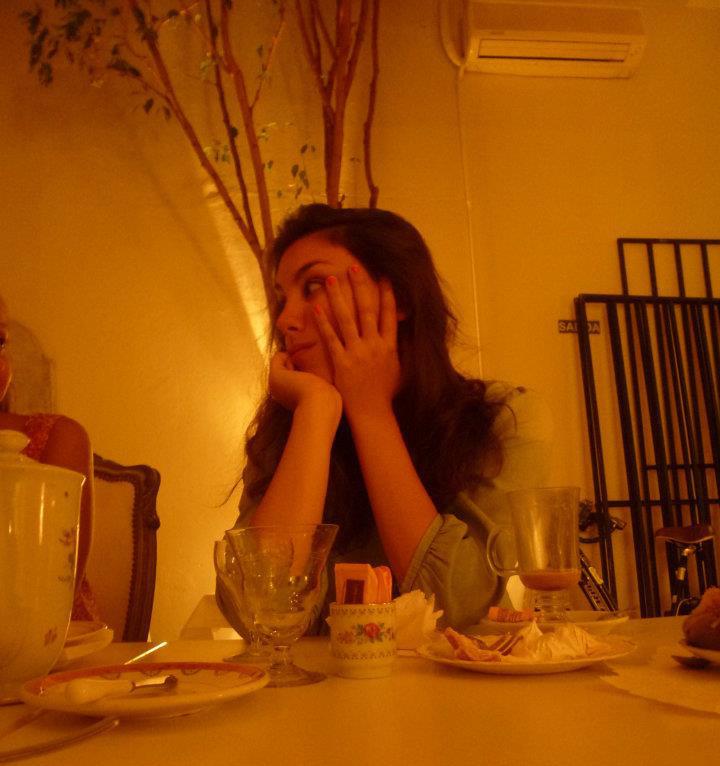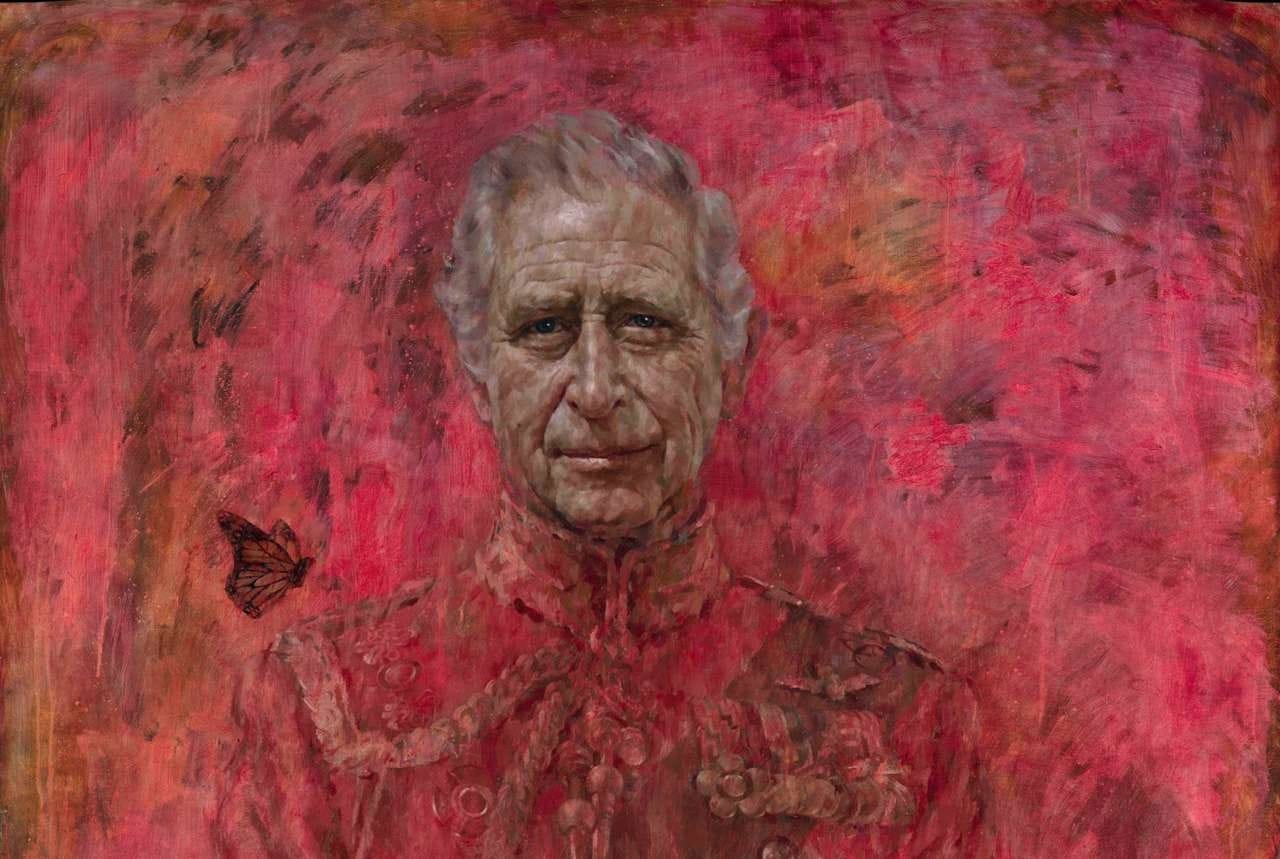
The blood of all men of all nations being red
the Communist International named red its banner color
Pope Innocent IV gave cardinals their first red hats
saying a cardinal's blood belonged to the holy mother church.
The bloodcolor red is a symbol.
Carl Sandburg - The People, Yes
1
The first time you picked a scab and immediately licked the wound, you learned that there's something salty about the taste of our blood. Seeing that small amount of blood flow is a small pleasure, like the glass of soda that comes with your coffee. It's a light, watery red; it's not the dark, thick, or clotted blood that, if you're a woman and/or menstruate, you'll get used to seeing. Menstruation, by the way, is a cultural preparation against the tragic spill that leaves you immobile if you're unfamiliar with it.
The bright red that emerges when you peel off the skin is striking due to its contrast with the skin. And I'm obsessed with placing a tiny piece of toilet paper and watching it absorb all the red until it becomes soaked and turns brown from contact with oxygen. An exquisite, homemade alchemy, but no less magical for that.
Blood is perhaps the first red in our lives and is almost certainly the first color in the life of art (both pictorial and cave art). The first paintings of Homo sapiens, 75,000 years ago, were in this shade. For centuries, quality red pigments were scarce and served as valuables, currency, and a source of trafficking and theft. Ochre, carmine, and cinnabar were obtained from insects or minerals such as mercury sulfide, with a beautiful and deadly chromatic intensity. This panorama changed with the discovery of purple, which was obtained from mollusks and produced shades ranging from red to violet.
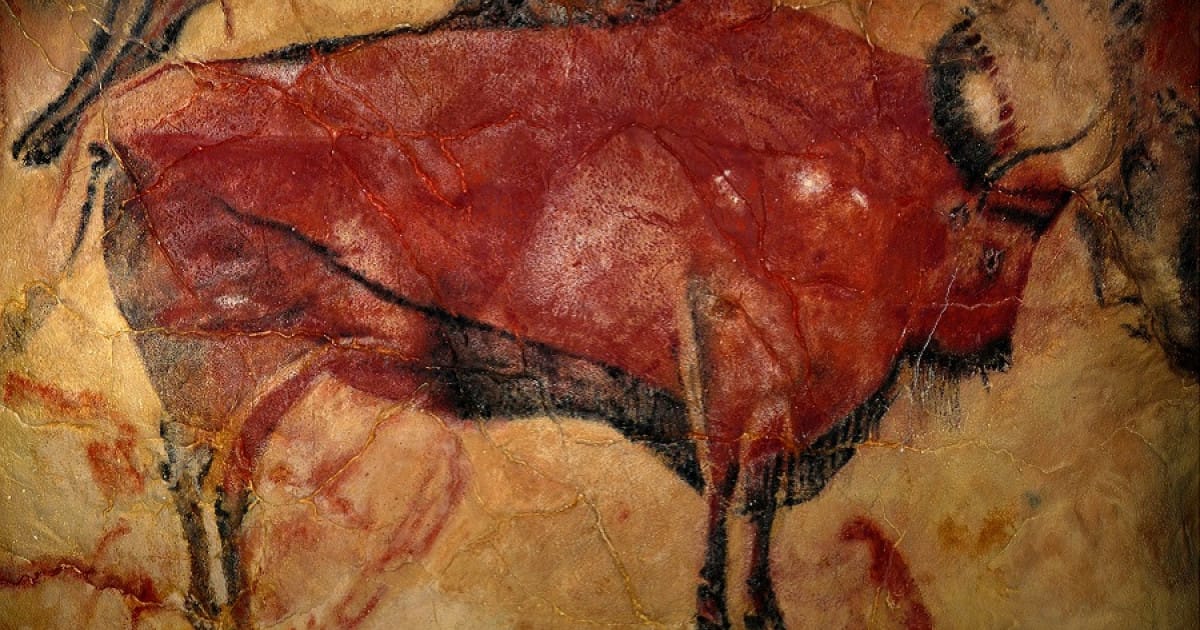
2
The term red comes from the Latin russus , which for the Romans meant a specific shade: a deep red, a scorching red. From this also comes the French rouge and the Italian rosso . In Spanish, however, the use of this term is not documented before the 15th century, but there were other words for it. The most widespread were bermejo , colorado, and encarnado . In Old Russian, redalso means what we mean today by beautiful or gorgeous .
Red cannot be produced from other colors; it's a primary color. It's the first color on the chromatic scale. It corresponds to the lowest frequency of light discernible to the human eye. It's at the extreme end of the visible spectrum, just before infrared light. It's at the edge of what we can see without mediation. It's a limit, a restriction. Then there's the invisible, but also the forbidden and the absent, that which triggers and fuels our imagination and our fears only because we can't see it. Is this why we associate red with the forbidden and sinful?
Each color has thousands of symbolic associations and meanings. Color gives us "an enormous vocabulary in the visual alphabet," as DA Dondis argues in The Syntax of the Image . Red is a signature color: it symbolizes love, sex, seduction, passion, strength, fire, ardor, protection, and good luck, but also hatred, anger, danger, tragedy, and war. Red is the land of Mars, the Roman god of war. The uniforms of various armies were dyed red to camouflage blood from wounds. Red is the Phoenician cap, which we know as the Phrygian cap and was used in slave liberation ceremonies. Red is the punzó, a very bright red that owes its name to a wild poppy. And the punzó emblem of the federalists.
Red stands out, warns, stimulates adrenaline production, increases body temperature, and accelerates the pulse. Like a good red mouth. It's an alert. It warns predators of toxicity or a strong, spicy flavor. Red is tension. It's communism. And it's also maximum capitalism: Coca-Cola, Ferrari, and Valentino all have their own reds. They say that when you cut open an animal, the sight of blood makes you hungry. It's the red that stimulates the appetite of scientists in laboratories and of any of us in a restaurant painted that color.
Red flag. Red code. Red accounts. Red button. The red carpet. The red threat.
In China, it's the color used to wrap money in gifts; it's good luck. Red brings down the stock market in the West and up the stock market in the East. In the Roman Empire, the symbol of wealth and economic well-being was red, an expensive, scarce, and difficult-to-obtain color; therefore, only emperors and senators wore some red in their clothing. Red also represents power.
In Catholic liturgy, it symbolizes the fire of charity and the shed blood of Christ, and is used on martyrdom feasts, Pentecost, and the feast of the Holy Spirit. Red speaks of Jesus' ultimate sacrifice, through whom we are redeemed. Red is also the symbol of the Cross of St. George, an emblem of the struggle against Muslims and a mystical vision of Richard the Lionheart during the First Crusade.
3
On September 8, 2022, Queen Elizabeth Alexandra Mary Windsor died. On May 6, 2023, her son Charles, Prince of Wales, becomes the current King of the United Kingdom and the Commonwealth realms in Westminster Abbey. A year later, his official portrait by Jonathan Yeo is unveiled. This is the one:
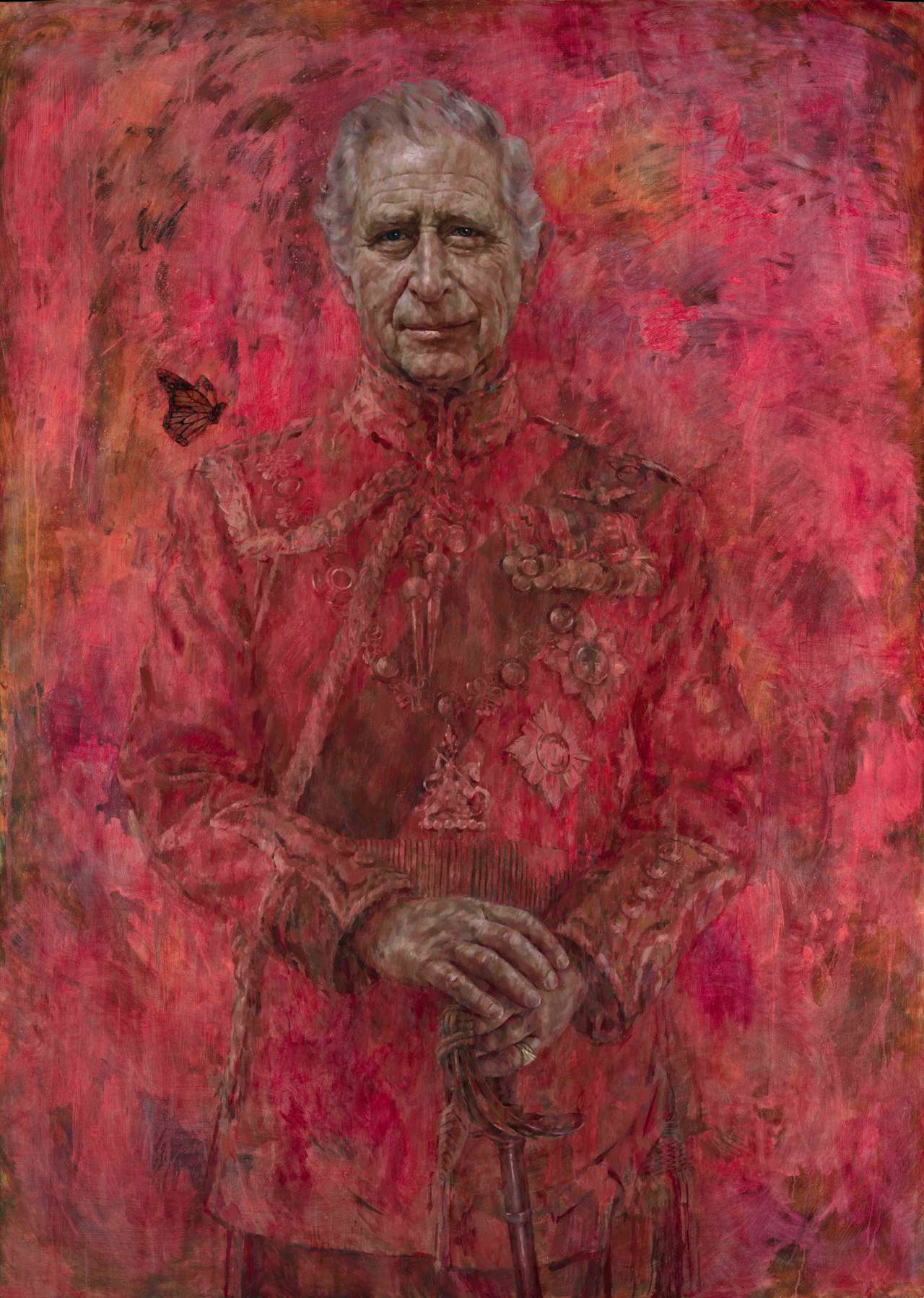
Some art critics have spoken of the red in this painting as a dramatic device to represent the weight of the monarchy and the fragility of the individual. Is this really so? As a nearsighted person with astigmatism, the first thing I saw was a blur, then a head floating in that blur, and then the connecting dots began to appear and the details appeared. One painting always leads me to another, because the hyperlink predates the internet; it's a reflex of the mind to expend less energy and complete what we're seeing more quickly. It's as if the figure of the King, I thought, were reflected in the glass of an entirely red Rothko .
When I saw the portrait of Charles III, I immediately remembered the monochrome painting of the Theotokos (Mother of God in Greek) Oranta or Virgin of the Sign, by Sylwia Perczak. The Theotokos is a type of Byzantine Marian icon in the Orthodox Christian tradition, where the Virgin Mary appears in an attitude of prayer, with her arms raised, no longer holding her Son but offering him, while he appears in her womb or breast, representing the Incarnation, God made Man, in the Divine Temple that is his Mother: "Your womb has become a holy table, carrying heavenly bread to Christ. All who eat from it will not die," says an Orthodox chant. Here, red is a symbol of divinity but also of sacrifice.
This color on the Theotokos used by the Polish artist Perczak, identifies her as the "Woman clothed with the sun" from the Book of Revelation (12:1), or Amicta Sole: "A great sign appeared in heaven: a woman clothed with the sun, with the moon under her feet and on her head a crown of twelve stars." Amicta Sole is an iconography of medieval origin that in some interpretations refers to the indestructible Church, and in all canonical ones to Mary, who intercedes at the Last Judgment to redeem us with God's forgiveness. Woman and Mother of the Child who defeated Evil, sometimes serpent, other times dragon or devil, like Saint Michael and Saint George whose red cross is the flag of England.
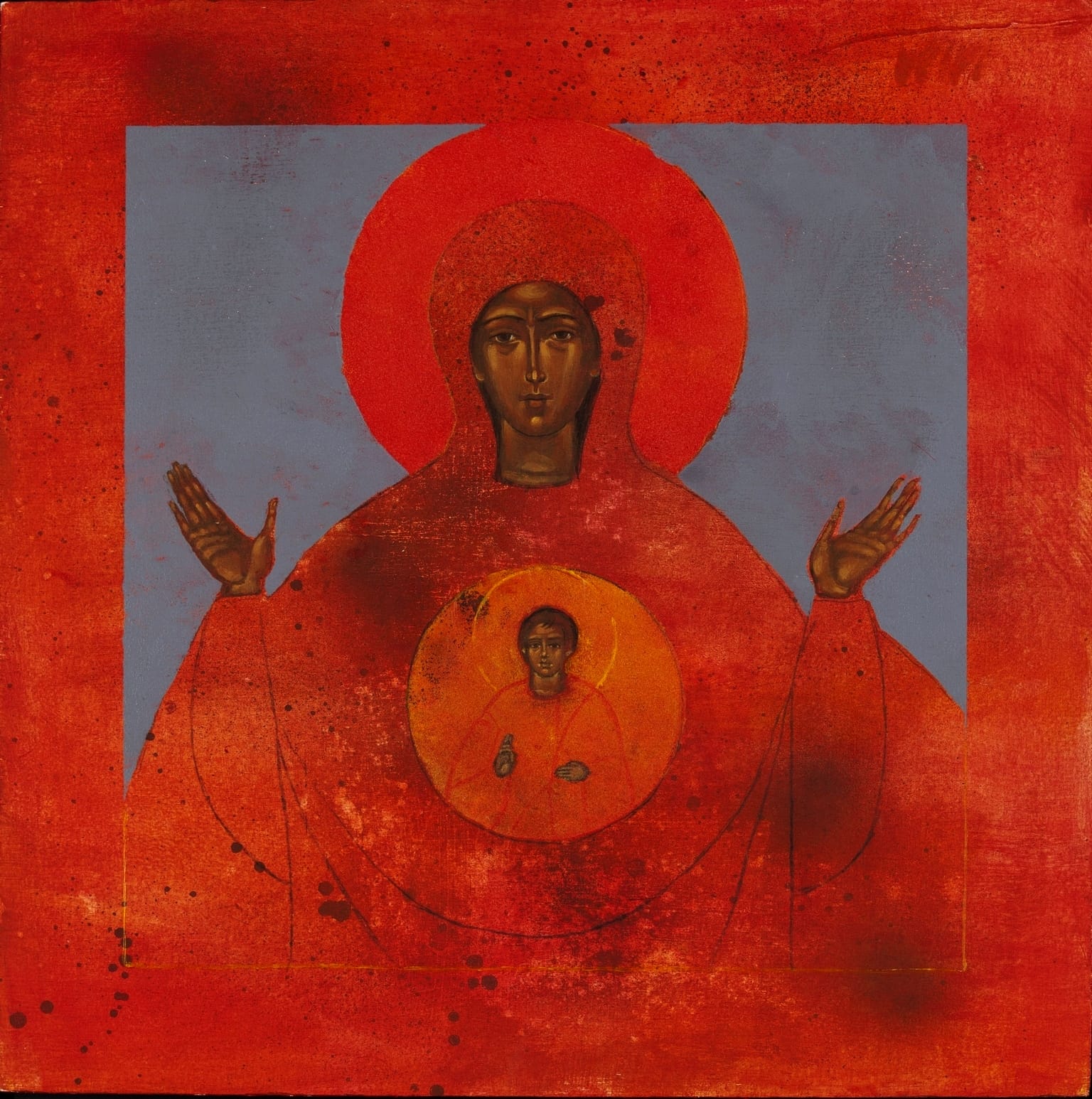
Another painting that came to mind when I saw the royal portrait was The Spoliation by Doménikos Theotokópoulos, aka El Greco. An artist initially trained in post-Byzantine art, he specialized in icon painting. This brightly colored canvas, which shows Christ dressed entirely in red before his crucifixion, now hangs in the sacristy of Toledo Cathedral. It was somewhat controversial in its time for featuring figures positioned above the head of a halo-less Jesus, decisions by the artist that did not respect the iconographic principles imposed by the Council of Trent.
Controversy was a hallmark of El Greco, for whom, as an artistic principle, color in painting was more important than drawing; and imagination and expressiveness more than faithful representation. The painting " The Stripping" recently circulated on X (Twitter) because someone else thought the same thing when they saw the photo of Luigi Mangione being taken away by the New York police (NYPD).
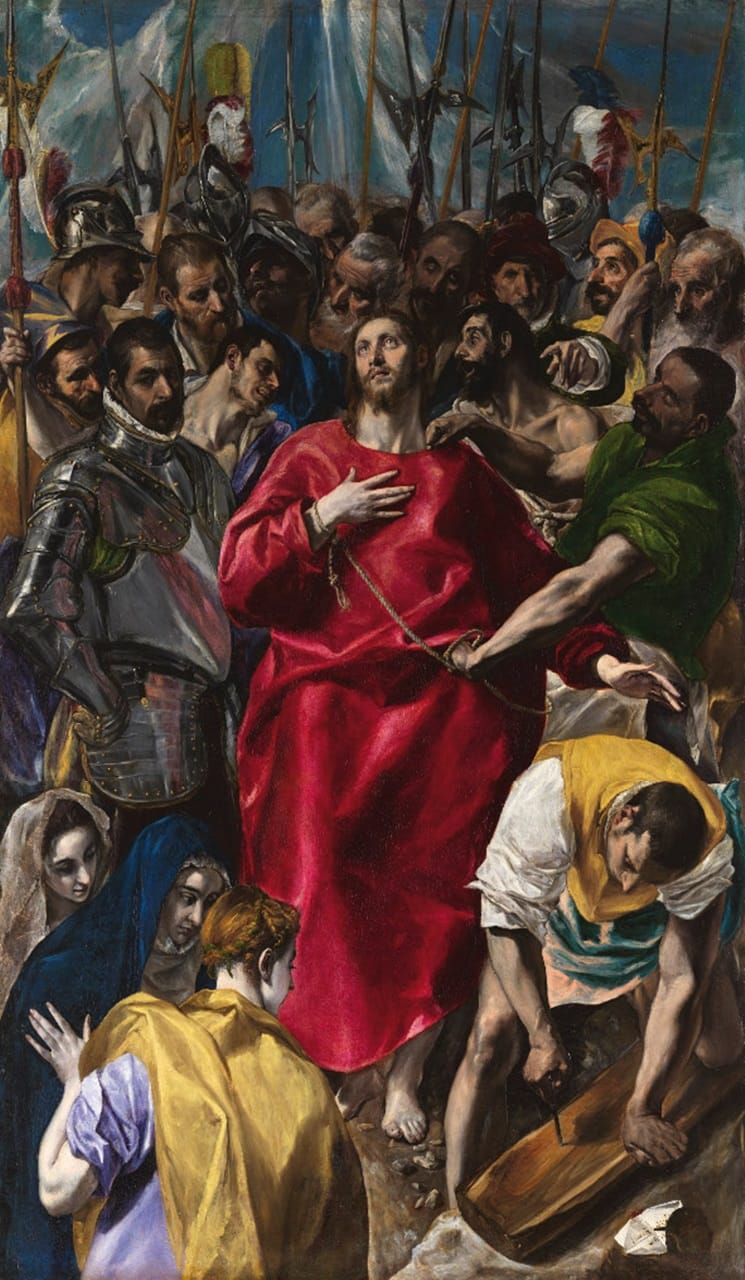
The portrait of King Charles III also reminds me of one of Toulouse Lautrec's last works, which shows the back to an older man dressed in his 18th-century admiral's uniform— it's Admiral Viaud , a friend of the French painter who accompanied him in his final days—watching a ship drift away on the horizon of a choppy sea, in muted colors—perhaps how the painter saw his life slipping away. Thus, the human figure stands out despite being off-center from its classic location, with loose brushstrokes where the line blurs and the color that creates contrast is central.
The work was created as part of an unfinished series following the French painter's death. Today, it can be seen at the São Paulo Museum of Art in Brazil, emblematic of the design of Italian-Brazilian architect Lina Bo Bardi, who has her own signature red: Lina's Red . A red that, for her, when contrasted with and superimposed on the concrete, is nothing other than the blood pumped from the heart of the work, flowing throughout the entire structure.
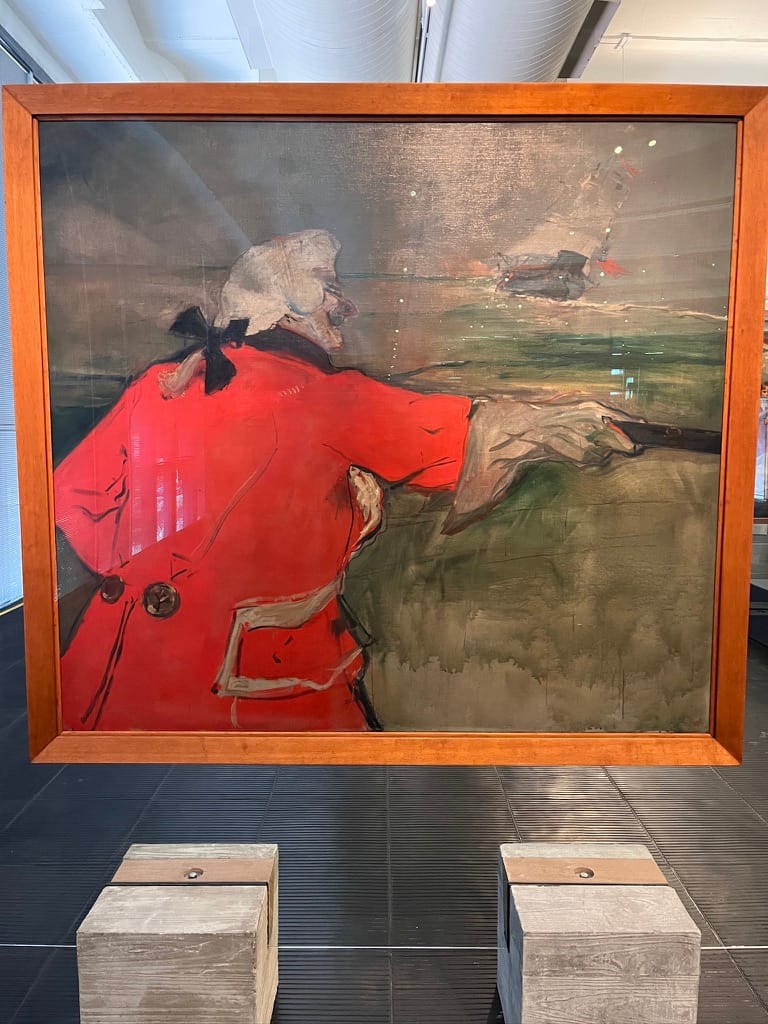
The more you look at a painting, the more details you see. And so life appears in the royal portrait, that fleeting whim, like a butterfly on Charles's shoulder. A butterfly that is a symbol of resurrection but also of the fragility of our existence, and so it brings death, the Last Judgment, sin, and what is slipping through our fingers into the surface. Is it perhaps the Queen who died so that Charles could now be King?
The butterfly has been associated, from early on, with the human soul that has been freed from the body at death. In Christian art, it symbolizes the resurrection of Christ. And before that, in Greek mythology—as Aristotle posits in The History of Animals —the butterfly is a symbol of Psyche, the goddess of the soul. In Chinese art, when it appears, it is a reference to a riddle from the Zhuangzi , a very ancient text, and speaks of the dissolution of human selfishness in nature. By the 17th century, the butterfly, and especially the red butterfly, like the one in the portrait of the king, also began to be associated with diabolical creatures and the burning embers of perdition.
Cézanne said that "when red reaches its greatest richness, form reaches its greatest fullness." The red in the figure of Charles isn't supposed to overshadow him, but rather to elevate him and make us forget, for a moment, that he's a man, so we can see him as King. And yet, what feelings does it generate? There's something about this portrait that draws me back to so many other works. But the ones I thought of when I saw it are paintings that move me, spiritual paintings where red gives life, impacts, and penetrates. And here, what happens (to me)?
Red, with its lifeblood, dissolves into Charles. A King out of time, devoid of what once made monarchies magnanimous and imposing. It's a portrait that seems to feign something, an artificial deception, lacking contrast or passion. There is only one greatness in what we see, and it is the greatness of red, flawed and incomplete. And that lack is what compels you to look at it in search of what isn't there.
Despite all its historical, symbolic, and emotional significance, the intensity of red fails to permeate the man who wears it. It doesn't even consume him. All the fire of red is extinguished, and at the same time, it seems too much for a king destined to remain in the background.

